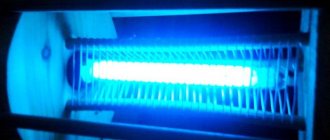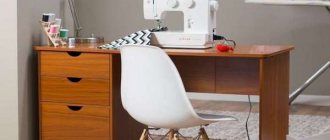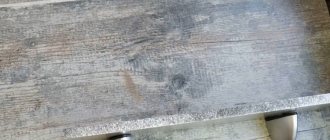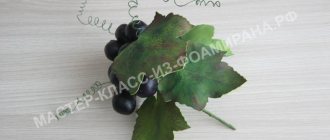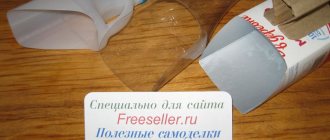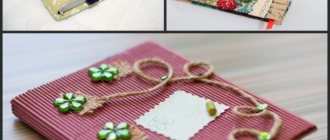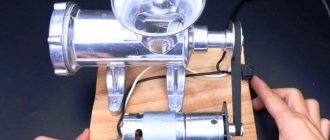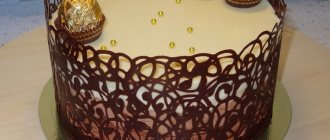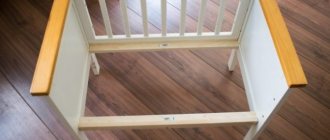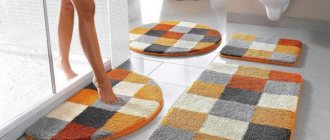Physical experiments for primary school children
The laws of science, ordinary entry-level physics can be found and discovered in the simplest objects and their amazing properties. “Go through fire, water and copper pipes” - a well-known phraseology is used, on occasion, for test-discoverers.
Balloon, fire and water
Flying balls bring holidays and joy to children. Why do the ball and smoke rise up? When we inflate ourselves or with the help of fire, the heated air becomes rarefied, lighter than cold air, and the balloon flies up. The material of balloons is fragile and is resistant to fire and sharp objects. But in our experience it becomes “fireproof”.
An inflated and tied balloon will burst if you bring it to the fire. The rubber of the experimental ball became hot, weakened and burst under the pressure of the air located there. But the ball filled with water will not burst when a match is lit, unlike the first one.
How to explain this result? A miracle occurs due to the amazing properties of the liquid. Water can accumulate and absorb a lot of heat (thermal conductivity). It will take away more heat and prevent the rubber of the ball, which is no longer so hot, from weakening too much and melting.
Fascinating physics experiments are tested in the safety of your home with adults.
Cutting wood with a paper disc
It is known that “water wears away stones,” but cutting wood with paper can surprise you. Let's test the sharpness of the paper experimentally. Two circles are cut out from ordinary white office sheets with a diameter of 12.5 cm. We glue the paper circles together with “Pencil” glue, making them smooth, without waves. The disc turns out soft.
After drying, a hole is cut in the center for a screwdriver (grinder). Install and secure the paper disk. We start the tool, cut a block of wood, possibly drywall, plastic. The cut is smooth and the cut is even.
Why is this happening? Fast rotation provides sufficient tension to the paper. Paper acquires high cutting ability through the significant rotation speed and centrifugal acceleration transmitted to the disk.
Magnet gun
You won't find any interesting magnetic construction sets in children's toy stores. But assembling a magnetic gun with your own hands will not be difficult, if only you had suitable magnets. Permanent magnets are products made of hard alloys that retain magnetic force for a long time. For the experiment you will need:
- strong permanent magnets (neodymium) 4 pcs. minimum;
- steel balls (from ball bearings);
- for the base of the gun (guide), a plastic or aluminum profile so that the balls can roll;
- electrical tape or adhesive tape for attaching magnets to the profile, the distance between them is no more than 80 mm.
Let's place 3 balls behind each “accelerator”, place the starting ball not far in front of the first magnet and push it slightly. The magnet attracted the ball, transferred the energy of motion to other subsequent balls from the impact, the latter itself begins to move (according to the law of conservation of momentum); then further the 2nd magnet, again balls and so on. It is the last ball that bounces, since it is attracted weaker than the others.
What causes the accelerated “shot”? Magnets attract more strongly at a short distance (a few millimeters), at the very last moment of approach. Due to attraction, the ball receives additional speed (+ momentum), which is transmitted to the ejected ball. Through the accelerating elements (4), an increasing impulse is accumulated for the subsequent moving ball.
Examples for preschoolers
Physics experiments at home for preschool children.
Magnetic pencil
Required materials for the experiment:
- Battery.
- Thick pencil.
- Wire. Diameter from 0.2 to 0.5 mm.
- Insulating tape.
A magnetic pencil is a spectacular physics experiment that can be easily done at home
. Experiment progress:
- Wrap the wire near the pencil, leaving a distance to the edge of 0.5 - 1 cm.
- At the end of one row, wind the second row in the opposite direction. Until the wire is completely wound. The main thing is to stock up on two ends of wire about 8 cm long. Secure the turns with tape so that they do not unwind.
- Clean the remaining 2 ends of the wire, connecting to the battery.
Result of the experiment: during a physics experiment at home, it was possible to make a magnet capable of attaching small iron objects.
Top
The top is in a vertical position during rotation of the circulation around the axis, and falls as the rotation slows down. During the movement of a multi-colored top, visual elements of color mixing and elements of color dispersion are observed.
Color Experience:
- An ordinary top model is sectors. The circle is divided into the corresponding number and painted in different colors.
- During rotation, a color change is observed.
- The experiment demonstrates the combination of colors. Experiments are carried out with sectors.
When dividing the top into 7 sectors, decorating the sectors depending on the location of the color, during rotation the top will change color, becoming white. The experience that takes place is the mixing of colors. In some cases, the effect is not achieved, but a multi-colored shade is created.
Magic top
Materials and course of the experiment:
- Print templates in black and white colors, make 2 tops from the materials.
- When the first top spins, rings of different colors will appear.
- When rotated in one direction and then in the other, the rings will be different from each other.
- The second top becomes like a circle.
| Analysis | Data |
|
|
lemon battery
The battery is easily created from fruits. The voltage depends on the fruit. The benefit of lemon is citric acid, which is capable of creating an electric current.
Required tools:
- Lemon.
- Wire (copper). The larger the experiment, the more wire you will need. If you don't have one, you'll need a coin.
- Zinc plate. A bolt, screws, and wire are used as a plate.
- Multimeter (measures voltage).
- Light-emitting diode. (Fixes the current).
Sequencing:
- Take a lemon and mash it.
- Place copper conductors 2 cm deep.
- Attach the wire to the rods.
- Measure the number of volts using a multimeter.
Assemble 1 more such structure, connecting them together. Or insert another copper wire. Connect them together. A second battery is required as one battery will not light the LED. The lemon battery now produces electricity.
Analysis of experience: Such a battery carries out interaction between conductors. When conductors are placed in the fruit, the metals are found among the acid. The reaction occurs and the ions move around, producing energy.
Experience with inertia
Coin inertia:
- Take a coin and place it on a ruler lying on a smooth surface. When you move the ruler, the coin will move. If the ruler is abruptly pulled out from under the coin, the coin will not budge due to inertia.
- Take thin paper, throw it over a glass turned upside down, put a couple of coins on a strip of paper. Holding the end of the strip, quickly run a ruler along it. The coins will remain in place.
Experiments in physics in grades 5-8
For a rational understanding of the material, it is suggested that after studying a topic, you should immediately try to apply it and consolidate the theory with practical results. Find time, with passion and pleasure, conduct home experiments in physics, analyze, propose conclusions and memorize rules and laws.
Water candle
Almost everyone will say that a candle in water will go out. But when tested, this does not happen for a long time. Let's take a glass of water as a candlestick. We weigh down a thick candle immersed in water with a nail, so that only the wick and the tip of the paraffin protrude above the surface. We light the wick.
What happens to the candles? Combustion requires oxygen (oxidizing agent) and fuel (paraffin in the wick). It is not the wick itself that burns in a candle, but the paraffin with which it is soaked. The wide candle gradually shortens, becomes lighter, and therefore floats up a little. At the edges, paraffin, cooled with water, melts more slowly than that of the wick. This creates a deep funnel with thin fencing edges, inside which a wick burns in molten paraffin. The recess also makes the candle lighter; it floats on the water like a boat. But over time, water and water vapor will stop the supply of oxygen and the candle will go out. This experience cannot be achieved with thin candles. The paraffin is intensively cooled by water, stops melting, does not rise up the wick (fuel disappears), and the fire disappears.
They make water candles with oils. The oil from the top layer above the water burns in the wick until it runs out; and the wick itself, when fixed, floats as if on a “raft”.
Magnetic parachute
A parachute is usually used to slow down the fall. It is used not only in the air, but also underground, in mines. Is it possible to reduce speed using a magnet? If a magnet is dropped on the floor, it will quickly hit the surface under the influence of gravity. All electrical engineering is based on the connection between magnetism and electricity.
Let's conduct an experiment with a neodymium magnet and a vertical copper tube, the diameter of which is 2 times larger than the size of the magnet. After lowering the magnet into the hole, it suddenly descends slowly, rather than falling quickly as before. Maybe this overcoming gravity is levitation?
Why is the fall slowing down? The reason for this is two basic principles of electromagnetism:
- A change in the magnetic field induces an electric current in the surrounding conductors.
- Electric current generates an associated magnetic field.
As the magnet moves through the pipe, the magnetic flux changes so that it induces circulating circular currents in the pipe. The currents in turn generate magnetic fields that interact with the magnet's field. The direction of the current (determined by Lenz's rule) is such that the magnetic field of the current attracts the magnet from above and slows it down. Above the falling magnet, the magnetic flux decreases.
What if the tube is replaced with something else? The experience serves for further “smart” implementations. On a similar basis, a magnetohydrodynamic parachute for a spacecraft is being developed.
LiveInternetLiveInternet
Entertaining experiences and experiments for smart dads and curious preschoolers
Dear dads! One of the important issues in the upbringing and education of preschool children is the problem of introducing children to nature . Imagine that you are standing on the threshold of Nature - the Home common to us and other living beings (animals, plants and even microorganisms). With a common Sun that warms us all, with a common Earth that feeds us all, with a common Water that quenches our thirst, with a common Air that we all breathe.
We offer you a number of experiments that you, men, can easily conduct with your children, thereby introducing them to nature, developing cognitive interest and creativity.
What's in the package?
Goal: Detect air in the surrounding space.
Look at an empty plastic bag together. Ask what's in the package. Turning away from the child, fill the bag with air and twist the open end so that the bag becomes elastic, then show the child the closed bag filled with air and repeat your question. Open the package - there is nothing in it. When you opened the package, it stopped being elastic. Why did this happen? It turns out there was air in it! Ask why the bag seems empty (the air is transparent, invisible, light).
Games with straws
Goal: detect air inside a person. Look at the tubes with your child and ask what the holes are for (they blow something in and out through them).
Invite your child to blow into the tube, placing his palm under the stream of air, and then ask what he felt, where the breeze came from (exhale the air that you inhaled before). Tell us that a person needs air to breathe, it gets inside when inhaling, it can not only be felt, but also seen. To do this, you need to blow into a tube, the end of which is lowered into water. Bubbles appear on the surface of the water, which then disappear (this is the air coming out of us; it is light, rises up through the water; when all of it comes out, the bubbles will also stop coming out).
"Candle in a Jar"
Goal: to reveal that during combustion the composition of the air changes (there is less oxygen) and that oxygen is needed for combustion. Learn how to extinguish fire.
Here is a problem for a child: dad suggests thinking and saying how you can extinguish a candle (flame) without touching the candle or the flame or blowing it out. “Let me show you how to do this,” says the father to his son (or daughter). He lights a candle, covers it with a jar, and together they watch the flame go out. “Dad, why doesn’t the candle burn in the jar?” - of course, the child will ask. And everything is very simple: in order to maintain a fire, you need a gas - oxygen. Oxygen burns and turns into another gas - carbon monoxide. Therefore, when oxygen access to the fire is difficult (we covered the candle with a jar), the fire goes out. Dad goes on to say that this property is used to extinguish fires (at high temperatures, water turns into steam and prevents the access of oxygen). And in order to extinguish the flame, it can be covered with earth (then oxygen will not flow and the flame will go out).
Interaction of water and snow
Purpose: to introduce the two states of aggregation of water (liquid and solid). Identify the properties of water: the higher its temperature, the faster the snow melts in it than in air; test the ability of snow to turn into a liquid state under the influence of heat.
Dad says to the child: “I can hold water in my hands and won’t spill a drop!” The child is interested - how will dad do it?! It’s very simple: a lump of snow - here’s water for you! “But is snow really water?” - the son or daughter will definitely ask. Then dad offers to hold a lump of snow in his hands. What's happening? The snow begins to melt and water appears. What if you take it to a warm room? What happens to snow if you put it in water? Where will snow melt faster: in warm or cold water?
Making colored ice cubes
Purpose: to introduce the fact that water freezes in the cold and that paint dissolves in it.
Together with your child, pour water into molds and jars, place them on a tray, and take them out into the cold. While walking, watch the freezing process. You can take the pieces of ice out of the molds, examine them, and discuss the properties of water. Then bring the pieces of ice into the room and watch the ice turn back into water.
Metal, its qualities and properties
Goal: recognize objects made of metal, determine its qualitative characteristics (surface structure, color) and properties (thermal conductivity, malleability, metallic luster).
Dad shows his son (or daughter) several metal objects (paper clips, nuts, screws, nails, weights). “What are these things made of? - he asks, “what do you think?” Dad suggests touching them and determining the features of their shape and surface structure; Together with the child, they examine different objects and highlight the characteristic metallic shine. “What happens to a nut or nail if you put it in water?” - Dad asks again. What if you put it in a sunny place or on a radiator? Try to attract it to you with a magnet? Also (and only dad can do this!), he demonstrates heating a metal object until the color appears red and says that in this way various parts are made from metal: they are heated and given the required shape.
Rubber, its qualities and properties
Purpose: To recognize things made of rubber, to determine its qualities (surface structure, thickness) and properties (density, elasticity, elasticity).
Offer to examine rubber objects, determine the color, surface structure (by touch). Suggest stretching the rubber band and making sure that it always returns to its original position, which is due to the elasticity of the material and its elasticity (these properties are used in the manufacture of balls). Pay attention to the change in the properties of rubber under the influence of heat - the material changes its structure and becomes sticky (demonstrates heating of the rubber over the light of a match).
Plastic, its qualities and properties
Goal: recognize things made of plastic, determine its qualities: surface structure, thickness, color) and properties: density, flexibility, melting, thermal conductivity).
Pour water into a plastic glass and invite your child to determine what is inside the glass without looking inside. Find out that this cannot be done, since the plastic is not transparent. Offer to determine the surface structure and thickness by touch. Place the glass in a bright sunny place and after 3-4 minutes ask to determine the temperature change (heating). If you bend a glass, it turns out that it bends under the influence of force, and if you apply more force, it breaks.
Glass, its qualities and properties
Goal: recognize objects made of glass; determine its qualities (surface structure, thickness, transparency) and properties (fragility, melting, thermal conductivity).
Together with your child, pour colored water into a glass glass and ask why you can see what is in the glass (it is transparent). Then the adult runs his fingers over the surface of the glass, determines its structure and places the glass without water in a sunny place in order to determine the change in the temperature of the glass after a few minutes.
Next, take a thin glass tube and place its middle part in the flame of a gas stove (match). After intense heating, bend or stretch it: under the influence of high temperature, the glass melts. When dropped even from a small height, glass objects break (which means they are fragile).
"Magic" ball
Purpose: to determine the cause of static electricity. The child draws attention to the balloon “sticking” to the wall: “Dad, why did the balloon stick to the wall, I didn’t smear it with glue?”
Dad explains that the ball doesn’t need glue to “stick” like that. It is enough to carefully rub it on your hair, fabric, clothes - and pieces of paper and hair will begin to stick to the ball. “This wonderful “glue,” Dad explains, “is static electricity.” “Can you see or hear him?” - the child is interested again. Then the dad turns off the light and invites his son or daughter to take off the sweater - a crack is heard and sparks are visible.
Dear dads! One of the important issues in the upbringing and education of preschool children is the problem of introducing children to nature . Imagine that you are standing on the threshold of Nature - the Home common to us and other living beings (animals, plants and even microorganisms). With a common Sun that warms us all, with a common Earth that feeds us all, with a common Water that quenches our thirst, with a common Air that we all breathe.
We offer you a number of experiments that you, men, can easily conduct with your children, thereby introducing them to nature, developing cognitive interest and creativity.
What's in the package?
Goal: Detect air in the surrounding space.
Look at an empty plastic bag together. Ask what's in the package. Turning away from the child, fill the bag with air and twist the open end so that the bag becomes elastic, then show the child the closed bag filled with air and repeat your question. Open the package - there is nothing in it. When you opened the package, it stopped being elastic. Why did this happen? It turns out there was air in it! Ask why the bag seems empty (the air is transparent, invisible, light).
Games with straws
Goal: detect air inside a person. Look at the tubes with your child and ask what the holes are for (they blow something in and out through them).
Invite your child to blow into the tube, placing his palm under the stream of air, and then ask what he felt, where the breeze came from (exhale the air that you inhaled before). Tell us that a person needs air to breathe, it gets inside when inhaling, it can not only be felt, but also seen. To do this, you need to blow into a tube, the end of which is lowered into water. Bubbles appear on the surface of the water, which then disappear (this is the air coming out of us; it is light, rises up through the water; when all of it comes out, the bubbles will also stop coming out).
"Candle in a Jar"
Goal: to reveal that during combustion the composition of the air changes (there is less oxygen) and that oxygen is needed for combustion. Learn how to extinguish fire.
Here is a problem for a child: dad suggests thinking and saying how you can extinguish a candle (flame) without touching the candle or the flame or blowing it out. “Let me show you how to do this,” says the father to his son (or daughter). He lights a candle, covers it with a jar, and together they watch the flame go out. “Dad, why doesn’t the candle burn in the jar?” - of course, the child will ask. And everything is very simple: in order to maintain a fire, you need a gas - oxygen. Oxygen burns and turns into another gas - carbon monoxide. Therefore, when oxygen access to the fire is difficult (we covered the candle with a jar), the fire goes out. Dad goes on to say that this property is used to extinguish fires (at high temperatures, water turns into steam and prevents the access of oxygen). And in order to extinguish the flame, it can be covered with earth (then oxygen will not flow and the flame will go out).
Interaction of water and snow
Purpose: to introduce the two states of aggregation of water (liquid and solid). Identify the properties of water: the higher its temperature, the faster the snow melts in it than in air; test the ability of snow to turn into a liquid state under the influence of heat.
Dad says to the child: “I can hold water in my hands and won’t spill a drop!” The child is interested - how will dad do it?! It’s very simple: a lump of snow - here’s water for you! “But is snow really water?” - the son or daughter will definitely ask. Then dad offers to hold a lump of snow in his hands. What's happening? The snow begins to melt and water appears. What if you take it to a warm room? What happens to snow if you put it in water? Where will snow melt faster: in warm or cold water?
Making colored ice cubes
Purpose: to introduce the fact that water freezes in the cold and that paint dissolves in it.
Together with your child, pour water into molds and jars, place them on a tray, and take them out into the cold. While walking, watch the freezing process. You can take the pieces of ice out of the molds, examine them, and discuss the properties of water. Then bring the pieces of ice into the room and watch the ice turn back into water.
Metal, its qualities and properties
Goal: recognize objects made of metal, determine its qualitative characteristics (surface structure, color) and properties (thermal conductivity, malleability, metallic luster).
Dad shows his son (or daughter) several metal objects (paper clips, nuts, screws, nails, weights). “What are these things made of? - he asks, “what do you think?” Dad suggests touching them and determining the features of their shape and surface structure; Together with the child, they examine different objects and highlight the characteristic metallic shine. “What happens to a nut or nail if you put it in water?” - Dad asks again. What if you put it in a sunny place or on a radiator? Try to attract it to you with a magnet? Also (and only dad can do this!), he demonstrates heating a metal object until the color appears red and says that in this way various parts are made from metal: they are heated and given the required shape.
Rubber, its qualities and properties
Purpose: To recognize things made of rubber, to determine its qualities (surface structure, thickness) and properties (density, elasticity, elasticity).
Offer to examine rubber objects, determine the color, surface structure (by touch). Suggest stretching the rubber band and making sure that it always returns to its original position, which is due to the elasticity of the material and its elasticity (these properties are used in the manufacture of balls). Pay attention to the change in the properties of rubber under the influence of heat - the material changes its structure and becomes sticky (demonstrates heating of the rubber over the light of a match).
Plastic, its qualities and properties
Goal: recognize things made of plastic, determine its qualities: surface structure, thickness, color) and properties: density, flexibility, melting, thermal conductivity).
Pour water into a plastic glass and invite your child to determine what is inside the glass without looking inside. Find out that this cannot be done, since the plastic is not transparent. Offer to determine the surface structure and thickness by touch. Place the glass in a bright sunny place and after 3-4 minutes ask to determine the temperature change (heating). If you bend a glass, it turns out that it bends under the influence of force, and if you apply more force, it breaks.
Glass, its qualities and properties
Goal: recognize objects made of glass; determine its qualities (surface structure, thickness, transparency) and properties (fragility, melting, thermal conductivity).
Together with your child, pour colored water into a glass glass and ask why you can see what is in the glass (it is transparent). Then the adult runs his fingers over the surface of the glass, determines its structure and places the glass without water in a sunny place in order to determine the change in the temperature of the glass after a few minutes.
Next, take a thin glass tube and place its middle part in the flame of a gas stove (match). After intense heating, bend or stretch it: under the influence of high temperature, the glass melts. When dropped even from a small height, glass objects break (which means they are fragile).
"Magic" ball
Purpose: to determine the cause of static electricity. The child draws attention to the balloon “sticking” to the wall: “Dad, why did the balloon stick to the wall, I didn’t smear it with glue?”
Dad explains that the ball doesn’t need glue to “stick” like that. It is enough to carefully rub it on your hair, fabric, clothes - and pieces of paper and hair will begin to stick to the ball. “This wonderful “glue,” Dad explains, “is static electricity.” “Can you see or hear him?” - the child is interested again. Then the dad turns off the light and invites his son or daughter to take off the sweater - a crack is heard and sparks are visible.
Experiments for high school students
With an inquisitive attachment to physics, you definitely can’t do without experiments at home. Models and experiments will even help you solve interesting practical problems.
Volcano
Many have seen and made a volcano from soda and vinegar, a simple chemical reaction of neutralizing alkali when mixing the components. The gas formed during the reaction lifts the “lava” upward and an “eruption” occurs.
Let's look at the experience with another “underwater volcano”. Let's make a small hole in the cork of the bottle of alcohol red ink. Let's place this bottle at the bottom of a wide glass jar filled with water. Soon we will see how beautifully a thin stream of red mascara rises from the bottle to the surface of the water.
How does this happen? Alcohol is less dense than water. It slowly enters the bottle, pushing out the mascara, which only has to escape to the top. Density is one of the main characteristics of matter in nature.
